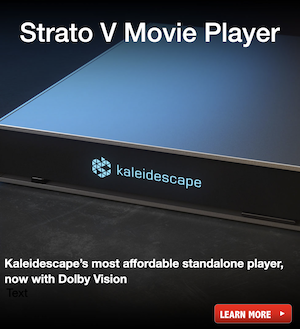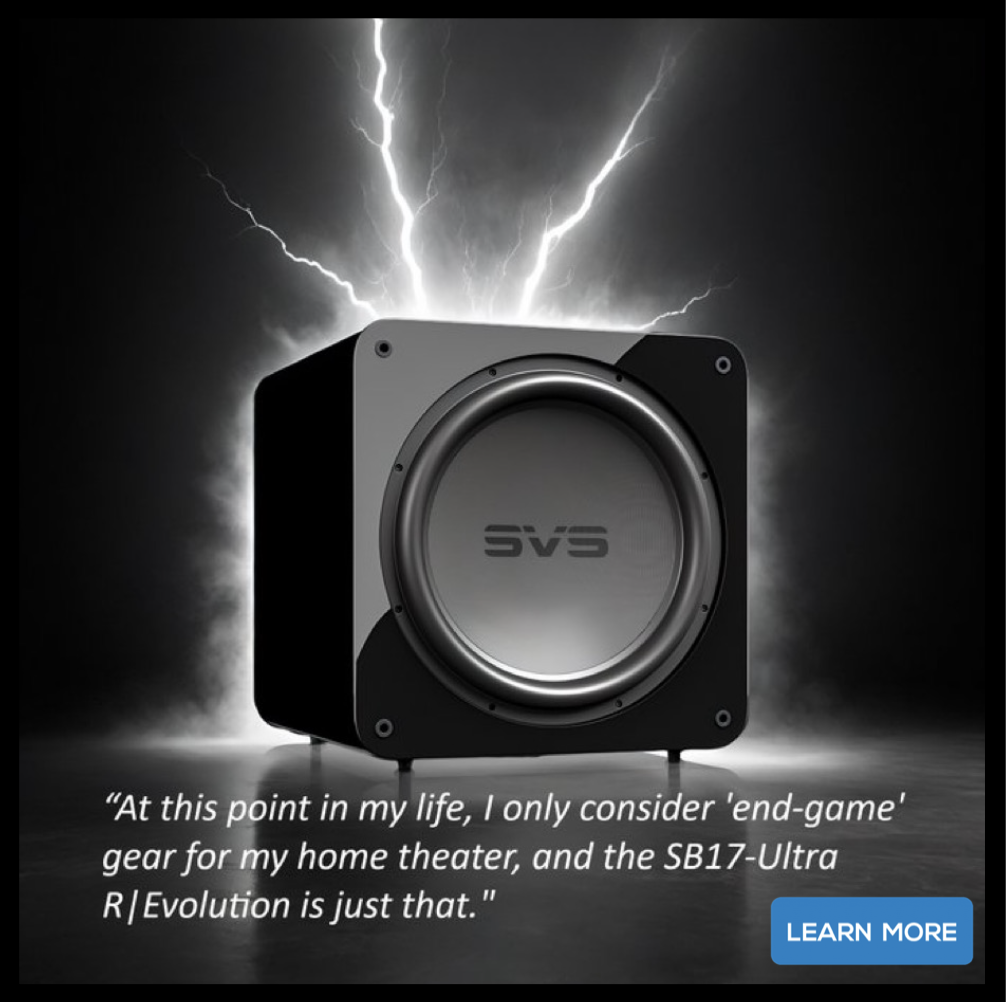(March 3, 2021) The road to 2021 has been bumpy for Onkyo Corporation and its associated brands (Onkyo, Integra, Pioneer, and Pioneer Elite). Rewind two years, and the company was on the cusp of being acquired by Sound United, a deal that would have positioned all four brands alongside the likes of Marantz, Denon, and Classe'. And if 2020's international COVID crisis wasn't rough enough, Onkyo made the difficult decision to shutter its US distribution subsidiary, ultimately agreeing to sell its distribution assets to a new name in the game.
Now, following months of silence, rumors, and speculation, Onkyo and Pioneer have officially re-emerged behind the strength of its new US-based distributor, 11 Trading Company, and the solid foundation of a deeper business relationship. To help make sense of that relationship's structure, here's a quick breakdown of the companies involved and how they're related: 11 Trading Company is a subsidiary of Klipsch, and Klipsch is owned by Voxx. Onkyo and Voxx have a healthy history born from an arrangement that empowers Onkyo to distribute Klipsch products in Japan. Thus, both companies' natural move was to expand their alliance by reversing that arrangement in the North American market. That's how 11 Trading Company entered the picture; they were created to lead the charge.
I recently had an opportunity to chat with 11 Trading Company's Rolf Hawkins (Product Manager) and Mike Bohner (Digital Marketing Manager), and the conversation was teeming with positive energy and optimism. Hawkins, an industry veteran with a background that includes work on Pioneer's legendary Kuro plasma TVs, is tasked with guiding the development of next-gen Onkyo and Pioneer AV receivers. Both he and Bohner say all systems are primed and ready to launch Onkyo Corporation back into the conversation.
The best news born from the discussion is that Onkyo and Pioneer are alive and well. In fact, it's safe to say a forward-thinking team of designers has reinvigorated both brands. As Hawkins eluded, the end goal has been to craft a new line of receivers loaded with features to competitively satisfy customer and integrator demands (such as a web-based user interface) while making sure the latest and greatest in audio and video technologies are accommodated. This, of course, is extremely exciting, especially considering the pedigree each brand brings to the table.
Pioneer's rich past includes ushering Class D amplification into mainstream popularity. Nearly 14 years ago, it joined forces with THX to evaluate Class D designs, hoping to make chassis more compact, discover higher output capabilities, and improve fidelity. THX ultimately identified areas needing improvement, including frequency response, distortion, and noise, which led to a solution-seeking collaboration between Pioneer and ICEpower. The resulting 2008 class of Pioneer Elite receivers became the first THX Certified products to feature Class D technology.
On the other hand, Onkyo is a revered brand known for honest power specs and extremely competent performance. And, of course, it's a name that was closely tied to Audyssey's popular room correction solutions. That powerful – arguably crucial – Audyssey relationship came to an end in 2014 when Onkyo introduced its own proprietary solution called AccuEQ. In many ways, that move best captures how Onkyo (and Pioneer, with its MCACC room correction) began two lose luster in the eyes of hardcore home theater enthusiasts. Despite excellent technologies and amp performance, competing brands offered correction solutions that were viewed as better options.
This isn't the first time Dirac has been linked to one or the other brand, which left some wondering if Onkyo's announcement was destined to crash. But, we're here to attest: it's real. As of now, we can only confirm the inclusion of Dirac Live on the majority of Onkyo, Elite, and Integra 2021 models; however, Dirac's Bass Control module might be part of the deal. That's a wait-and-see detail. More on that, soon.
After combing through specifications for Onkyo, Integra, and Pioneer Elite's latest, it appears that two of three Elite models, two of three Integra models, and two of four Onkyo models will support Dirac Live. Those models lacking support will feature MCACC or AccuEQ and some combination of subwoofer, phase control, and immersive sound EQ.
From a manufacturing perspective, the inclusion of licensed technology on mid- to higher-end models makes perfect sense. And, from an enthusiast's perspective, the ability to access Dirac capabilities at price points hovering around $1,000 is extremely attractive. This is a huge win for consumers because it opens the door to more options on the market, and the fact they're well-regarded brands is a major plus.
The other exciting inclusion is true HDMI 2.1 performance. 2.1 allows for 4K/120Hz and 8K video, an advanced gaming experience (think Variable Refresh Rate, Auto Low Latency Mode, and Quick Frame Transport), and support for features such as Enhanced Audio Return Channel. More importantly, Hawkins says the HDMI 2.1 chipset used in 2021 Onkyo, Integra, and Elite models will not suffer from the same bug weighing down brands that sourced Panasonic HDMI 2.1 chipsets for the 2020 model year. For a full breakdown of HDMI 2.1 input/output availability across all models, click here.
Physically speaking, 2021's crop of Pioneer Elite receivers looks nearly identical to its last model run of LX-xx4 gear. Each model has a gorgeous brushed aluminum front panel with robust volume and selector knobs, a bottom flip-down cover that conceals inputs and buttons, and Pioneer's classic orange display. Fans of the brand will be quick to note a refreshed remote control design, which is more simplified than past Elite remotes.
The VSX-LX505 (Projected-Minimum Advertised Price $1199) is Elite's flagship model, boasting 9.2-channel Class AB performance (120 watts per channel, 8 ohms, 2ch driven) with 11.2-channels of processing for 7.2.4 immersive sound when paired with an outboard amp. It's fully compatible with IMAX Enhanced, Dolby Atmos, DTS:X, legacy codecs, and associated upmixers. It also offers compatibility with a wide array of Hi-Res audio files. On the video front, the LX505 is HDR10+ and Dolby Vision-friendly, delivers HD upscaling (1080p to 4K/8K and 4K to 8K), and houses seven HDMI inputs and two outputs. Interestingly, Elite now offers access to DTS Play-Fi and Chromecast built-in, along with Apple AirPlay 2, Bluetooth, Wi-Fi, and support of most mainstream music services (including Amazon HD, Spotify, TIDAL, and Sonos systems). And if voice control suits your fancy, it's compatible with both Alexa and Google voice control, too.
The only notable and confirmed omission from the LX-505 is support for Auro-3D (this holds true for other Elite models as well as Onkyo/Integra's new AVRs). You might also notice that mentions of MQA and Qobuz are absent. Here's where things stand on both of those fronts: MQA is currently supported on the Pioneer Elite SX-N30 (no longer available in the US), Onkyo's TX-8260 and TX-8270, and Integra's DTM-6 and DTM-7. While each of those legacy receivers is a 2-channel model, there remains a possibility that native MQA support will find its way to some 2021 multi-channel models. As for Qobuz, built-in support isn't offered, but owners can stream Qobuz to any 2021 Elite, Onkyo, or Integra receiver via DTS Play-Fi and its Hi-Res capable Critical Listening Mode. To simplify the experience, this mode can be accessed using the free Pioneer and Onkyo Music Control apps (Apple and Android).
The VSX-LX305 (P-MAP $999) is also a 9.2-channel receiver loaded with most of the same capabilities as the LX505, minus the additional 2-channels of processing and a 100 watts per channel amp section. And the VSX-LX105 slides in for $300 less (P-MAP $699), with 7.2-channels of performance and the promise of 100 watts per channel (8 ohms, 2ch driven). Unlike the LX505 and LX305, the LX105 doesn't offer Dirac Live, slotting MCACC with Phase Control and Subwoofer EQ in its place.
All three Elite models feature advanced custom integration tools, including remote access to system information, web UI set-up, and compatibility with a broad array of integration partners.
If your goal is to deploy a 7.2.4 system, the TX-RZ50 can process up to 11.2 channels with multichannel pre-outs for 11.2 playback. It's also HDR 10+ and Dolby Vision compatible.
The NR6100 and NR7100 are similarly equipped but carry lesser amplifier capabilities (100 watts per channel, 8 ohms, 2ch driven) and lack additional channel processing and multichannel pre-outs. In comparison, the NR5100 uses discrete 2-stage power amplifier circuitry to deliver 80 watts per channel. The NR5100 and NR6100 are devoid of Dirac, favoring AccuEQ Room Acoustic Calibration with AccuReflex phase correction and subwoofer EQ instead.
Style-wise, all four Onkyo receivers drip with Onkyo's tell-tale physical features and – not surprisingly – utilize a remote control identical to that of Elite.
Lastly, the integrator-friendly Integra lineup is burdened with the largest projected price tags, with the 9.2-channel DRX-5.4 commanding $1,900 P-MAP. With physical features looking similar to past models, its three new models are similarly equipped to Onkyo's best offerings, with the addition of key custom integration features. Those features include set-up and IP control via a web browser, a dealer settings memory/recall function, and compatibility with Crestron, Control4, Savant, URC, ELAN, and RTI automation.
Pricing for the 9.2-channel DRX3.4 and 7.2-channel DRX-2.4 is $1200 P-MAP and $800 P-MAP, respectively.
That leaves us with Pioneer's non-Elite branded gear, which is notably missing from action. There's an outside shot we might have some model news to share later this year, but Pioneer is holding its cards close to its chest. As for Onkyo, Integra, and Elite, we'll likely see a three-tier rollout during 2021, with the third phase happening closer to the August/September timeframe. According to Hawkins, nothing is set in stone (yet), but 11 Trading Company is close to finalizing a launch schedule.
With pricing ranging from $899 to $1,199, all four of the Elite and Onkyo top-end models are positioned to be highly competitive. The additions of Dirac, Play-Fi, Chromecast built-in, IMAX Enhanced, and true HDMI 2.1 performance are just a few of this group's highlights. While I predict Onkyo's TX-NR7100 and TX-RZ50 receivers will prove to be the most popular of the bunch, there's plenty of positives when considering the entire line's budget-oriented options. Elite's VSX-LX105 (P-MAP $699) is also one to keep your eye on, particularly because of its healthy amp section.
Additional Photos
Elite VSX-505
Elite VSX-305
Elite VSX-105
Onkyo TX-RZ50
Onkyo TX-NR7100
Onkyo TX-NR6100
Onkyo TX-NR5100
Integra DRX-5.4
Integra DRX-3.4
Integra DRX-2.4
Last edited:



















